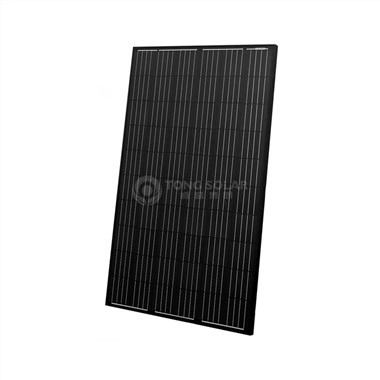What Factors Influence the Adoption and Deployment of Level 3 DC Fast Charging Infrastructure?
2024-05-24 10:31:34
Introduction:
Level 3 DC Fast Charger infrastructure plays a crucial role in the widespread adoption of electric vehicles (EVs) by providing rapid charging solutions for EV owners. However, the deployment and adoption of the product stations are influenced by various factors that affect their feasibility, accessibility, and effectiveness. In this web journal post, we will investigate the key variables that impact the selection and sending of the item foundation, shedding light on the challenges and openings in growing high-power charging systems for electric vehicles.
What Are the Technical Challenges in Deploying Level 3 DC Fast Charging Infrastructure?
The deployment of Level 3 DC Fast Charger infrastructure is accompanied by various technical challenges that can influence its implementation and effectiveness:
1. Power Grid Capacity: High-power Level 3 charging stations require significant electrical capacity to support their operation, which may pose challenges in areas with limited grid infrastructure. Upgrading electrical infrastructure to accommodate Level 3 chargers can be costly and time-consuming, affecting the pace of deployment.
2. Cooling and Heat Dissipation: Level 3 charging stations generate heat during the charging process, especially at higher power levels. Effective cooling and heat dissipation systems are essential to maintain optimal operating temperatures and ensure the longevity of charging equipment. Developing efficient cooling solutions that can handle the heat generated by Level 3 chargers is crucial for their deployment.
3. Interoperability and Compatibility: Ensuring interoperability and compatibility between Level 3 charging stations and electric vehicles is essential for seamless charging experiences. Standardization of charging connectors, communication protocols, and charging profiles can facilitate widespread adoption and interoperability, but achieving consensus among stakeholders can be challenging.
4. Reliability and Durability: Level 3 charging stations must demonstrate reliability and durability to withstand frequent use and harsh environmental conditions. Designing robust and resilient charging infrastructure that can operate reliably over an extended period is critical to building trust among EV owners and charging station operators.
Addressing these technical challenges requires collaboration among industry stakeholders, including automakers, charging station manufacturers, utilities, and policymakers, to develop innovative solutions and standards that support the widespread deployment of the product infrastructure.
How Do Market Dynamics and Economic Considerations Impact the Adoption of Level 3 DC Fast Charging Stations?
Market dynamics and economic considerations play a significant role in shaping the adoption and deployment of Level 3 Dc Fast Charger stations:
1. Investment Costs: The initial investment costs associated with deploying Level 3 charging infrastructure, including equipment procurement, installation, and site preparation, can be substantial. Charging station operators and investors evaluate the return on investment (ROI) and long-term revenue potential of Level 3 chargers before committing to deployment projects.
2. Business Models and Revenue Streams: Charging station operators may explore various business models and revenue streams to monetize Level 3 charging infrastructure, such as pay-per-use charging, subscription-based services, advertising, and partnerships with retail establishments. Developing sustainable business models that balance revenue generation with affordability for EV owners is essential for the widespread adoption of Level 3 chargers.
3. Market Demand and Growth Projections: The demand for the product infrastructure is influenced by factors such as the adoption rate of electric vehicles, consumer preferences, government incentives, and infrastructure investment. Market studies and growth projections provide valuable insights into future demand trends and help guide investment decisions and deployment strategies.
4. Competitive Landscape: The competitive landscape in the electric vehicle market, including the availability of alternative charging solutions such as Level 1 and Level 2 chargers, influences the adoption of the product stations. Charging station operators must differentiate their offerings and provide value-added services to attract customers and gain a competitive edge in the market.
5. Regulatory Environment: Government policies, regulations, and incentives can significantly impact the adoption of the product infrastructure. Supportive policies such as grants, tax incentives, and infrastructure funding can accelerate deployment efforts and incentivize private investment in charging infrastructure.
By understanding market dynamics and economic considerations, stakeholders can develop strategies and initiatives that promote the widespread adoption and deployment of the product stations, driving the transition to electric mobility and sustainable transportation solutions.
What Role Do Government Policies and Regulations Play in Promoting the Deployment of Level 3 DC Fast Charging Infrastructure?
Government policies and regulations play a crucial role in shaping the deployment and adoption of Level 3 Dc Fast Charger infrastructure:
1. Infrastructure Funding and Incentives: Governments at the federal, state, and local levels may provide funding assistance, grants, tax incentives, and rebates to support the deployment of Level 3 charging infrastructure. Financial incentives help offset investment costs for charging station operators and encourage the expansion of charging networks in underserved areas.
2. Regulatory Framework: Establishing clear and consistent regulatory frameworks for electric vehicle charging infrastructure is essential to promote investment certainty and market confidence. Regulations governing siting, permitting, standards compliance, and interoperability ensure the safety, reliability, and interoperability of Level 3 charging stations.
3. Zoning and Land Use Policies: Zoning regulations and land use policies can influence the siting and deployment of the product stations. Streamlining permitting processes, providing designated charging zones, and incentivizing charging infrastructure in strategic locations, such as transportation hubs, commercial centers, and highway corridors, can facilitate the expansion of charging networks and improve accessibility for EV owners.
4. Public-Private Partnerships: Collaboration between government agencies, utilities, charging station operators, automakers, and other stakeholders through public-private partnerships (PPPs) can accelerate the deployment of the product infrastructure. PPPs leverage shared resources, expertise, and funding to address infrastructure challenges, optimize deployment strategies, and promote sustainable mobility solutions.
5. Emission Reduction Targets: Government initiatives aimed at reducing greenhouse gas emissions and promoting clean transportation, such as zero-emission vehicle (ZEV) mandates and emissions standards, create market incentives for the adoption of electric vehicles and the expansion of charging infrastructure. Aligning charging infrastructure deployment goals with broader climate and sustainability objectives helps drive policy support and investment in Level 3 charging networks.
By implementing supportive policies and regulatory frameworks, governments can facilitate the deployment of the product infrastructure, accelerate the transition to electric mobility, and contribute to the development of sustainable transportation ecosystems.
Conclusion:
In conclusion, the adoption and deployment of Level 3 DC Fast Charger infrastructure are influenced by a complex interplay of technical, economic, and regulatory factors. Addressing technical challenges, such as power grid capacity, interoperability, and reliability, requires collaboration and innovation among industry stakeholders to develop scalable solutions that support rapid charging and seamless integration with electric vehicles.
Market dynamics and economic considerations, including investment costs, business models, market demand, and competitive factors, shape the deployment strategies and expansion plans of charging station operators and investors. Understanding market trends and growth projections helps stakeholders identify opportunities and navigate challenges in the evolving electric vehicle market landscape.
Government policies and regulations play a critical role in promoting the deployment of the product infrastructure
through infrastructure funding, regulatory frameworks, zoning policies, public-private partnerships, and emission reduction targets. Policy support and regulatory certainty create an enabling environment for investment, incentivize private sector participation, and drive innovation in sustainable transportation solutions.
By addressing these key factors and fostering collaboration among stakeholders, we can accelerate the adoption and deployment of the product infrastructure, driving the transition to electric mobility and contributing to a cleaner, greener future.
References:
1. "Electric Vehicle Charging Infrastructure Deployment: Guidelines for Policymakers" - International Energy Agency
2. "The Role of Government Policies in Promoting Electric Vehicle Charging Infrastructure" - National Renewable Energy Laboratory
3. "Market Trends and Growth Projections for Electric Vehicle Charging Infrastructure" - BloombergNEF
4. "Policy Support for Electric Vehicle Charging Infrastructure: Lessons Learned from Global Case Studies" - World Bank Group
5. "Regulatory Frameworks for Electric Vehicle Charging Infrastructure: Best Practices and Emerging Trends" - International Transport Forum
6. "Public-Private Partnerships for Electric Vehicle Charging Infrastructure: Case Studies and Success Stories" - Rocky Mountain Institute
7. "Economic Analysis of Level 3 DC Fast Charging Infrastructure Deployment" - Electric Power Research Institute
8. "Technical Challenges and Solutions in Deploying Level 3 DC Fast Charging Stations" - Society of Automotive Engineers
9. "Government Incentives and Funding Programs for Electric Vehicle Charging Infrastructure" - US Department of Energy
10. "Strategies for Promoting the Adoption of Electric Vehicles and Charging Infrastructure" - European Commission







